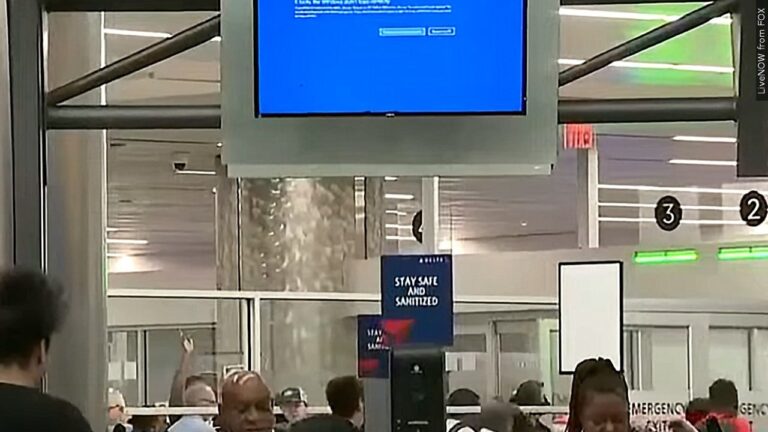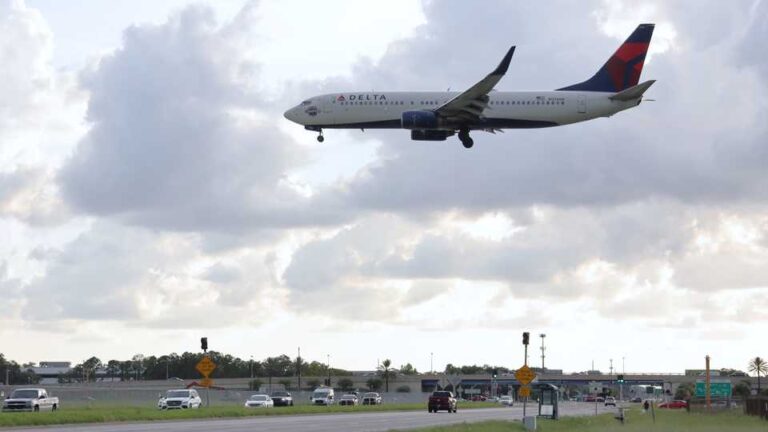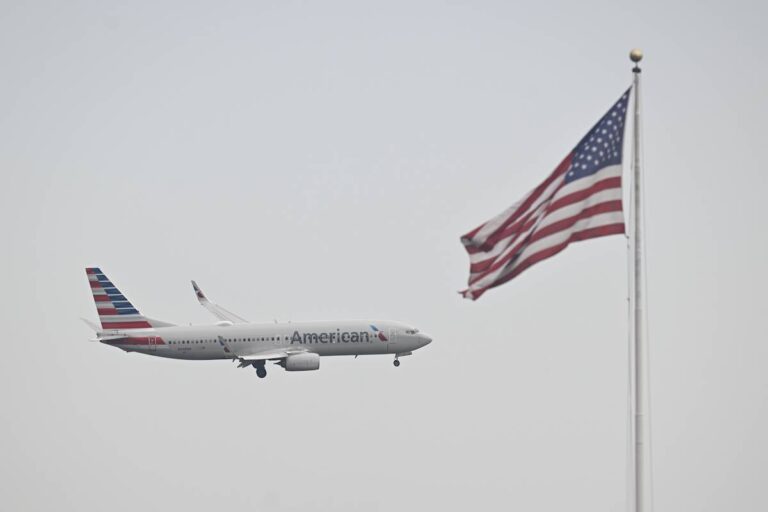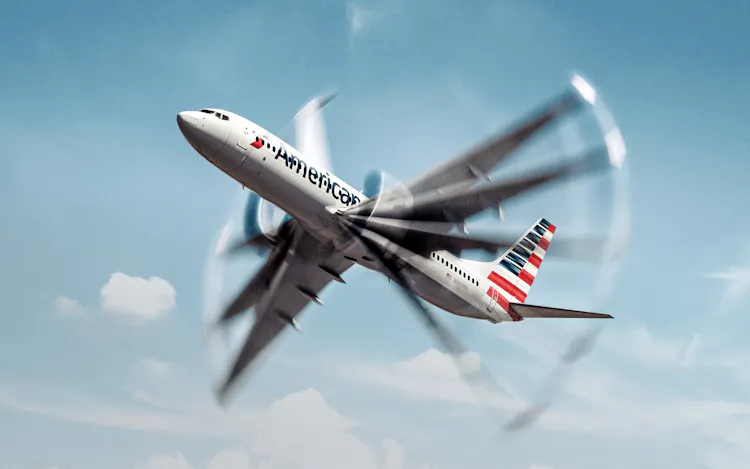Report: American airlines customers shocked at the sudden plane ….
Shocking compensation Alaska Airlines passengers were offered after door blew off at 16,000 feet
Passengers onboard Alaska Airlines flight 1282 could have grounds to take legal action against the airline.
Passengers on the Alaska Airlines flight which lost its door mid-air are speaking out after being offered ‘inadequate’ compensation.
On Friday evening (5 January), Alaska Airlines flight 1282 took off from Portland, Oregon to fly to Ontario, California. However, it had to turn back to its departing airport after the plug covering an unused exit door blew out at 16,000 feet and blew the ‘entire door’ off.
Thankfully, none of the 177 passengers and crew onboard the Boeing 737 Max 9 were hurt – though some of the passengers have since spoken out about the traumatic experience, as well as being offered compensation by the airlines.
Warning: Contains description of the one incident and distressed text messages:
Emma Vu – one of the 171 passengers – took to TikTok shortly after the ordeal to share her experience of what happened and to share texts she sent her parents, believing they may be her last.
A series of texts read: “I am so scared right now. Please pray for me. Please I don’t want to die.”
Other passengers also spoke out about the horrifying ordeal, with Nicholas Hoch telling NBC News it was ‘disorientating, alarming, terrifying’, and TikToker Courtney describing it as ‘the scariest moment in [her] life’.
Vu later revealed the airline allegedly offered her ‘a compensated flight with more legroom,’ ‘free snacks,’ as well as $1,500 in compensation for ‘any inconvenience’.
Vu sent frantic text messages to her parents, believing they may be her last.
The TikToker commented: “Alaska, would love some money, maybe some money for therapy. I don’t know, I just feel like a reimbursed flight with more legroom and free water and snacks is not enough.”
A partner at SeSeattle-basedtritmatter Firm, Daniel Laurence, is representing other Alaska Airlines passengers in a different case and has spoken out about what legal options passengers on flight 1282 have.
The partner warns The Post passengers on flight 1282 could sue the airline for ’emotional distress’.
Laurence advised: “As a moral matter, $1,500 per passenger, for what could have been a death experience and might even be described… as a near-death experience, is inadequate.
“They clearly would have a claim for emotional distress that was inflicted upon them.
The flight had to land back at the airport it departed from.
Getty Images/ Mario Tama
“I’ve heard from one of the passengers this morning who was interested in talking to me about the incident.”
Shortly after the 1282 fight returned ba Portland, the Federal Aviation Administration ordered Alaska Airlines to ground all Boeing 737-9 Max airplanes across the globe.
It launched an investigation to inspect every plane, resulting in 160 canceled lights, as per Oregon Live.
Alaska Airlines’ website states: “When we proceed with the formal inspection process, all aircraft will be thoroughly inspected individually by the FAA in consultation with Boeing.”
Shocking Compensation: Alaska Airlines’ Response to a Mid-Air Door Loss Incident
On January 5th, Alaska Airlines flight 1282 took off from Portland, Oregon, bound for Ontario, California. What should have been a routine flight turned into a terrifying ordeal when the plug covering an unused exit door blew out at 16,000 feet, resulting in the door being ripped off the aircraft. This incident has not only traumatized the 177 passengers and crew onboard the Boeing 737 Max 9 but also sparked significant controversy over the airline’s response and compensation offered to those affected.
The Incident: A Mid-Air Nightmare
As the flight ascended to 16,000 feet, passengers heard a loud bang and felt a sudden rush of air. The unused exit door had blown off, causing immediate chaos and fear among those onboard. Despite the severe nature of the incident, the flight crew managed to maintain control of the aircraft and safely return to Portland without any physical injuries reported.
Emma Vu, one of the 171 passengers, shared her harrowing experience on TikTok. She posted frantic text messages she had sent to her parents, fearing for her life. “I am so scared right now. Please pray for me. Please, I don’t want to die,” she wrote. Vu’s sentiments were echoed by other passengers, including Nicholas Hoch, who described the experience as “disorientating, alarming, and terrifying,” and TikToker Courtney, who called it “the scariest moment in [her] life.”
Inadequate Compensation: Passenger Outcry
Following the incident, Alaska Airlines offered passengers compensation that many felt was inadequate given the severity of the experience. Vu revealed that the airline had offered her “a compensated flight with more legroom,” “free snacks,” and $1,500 in compensation for “any inconvenience.” However, Vu and other passengers were not satisfied with this offer. Vu commented, “Alaska, would love some money, maybe some money for therapy. I don’t know, I just feel like a reimbursed flight with more legroom and free water and snacks is not enough.”
Legal Ramifications: Potential for Lawsuits
The controversy surrounding the compensation has led some passengers to consider legal action against Alaska Airlines. Daniel Laurence, a partner at the Seattle-based Stritmatter Firm, has spoken out about the potential legal options available to the passengers. Laurence, who is representing other Alaska Airlines passengers in a different case, suggested that passengers on flight 1282 could sue the airline for “emotional distress.”
“As a moral matter, $1,500 per passenger, for what could have been a death experience and might even be described… as a near-death experience, is inadequate,” Laurence stated. “They clearly would have a claim for emotional distress that was inflicted upon them.” He also mentioned that he had already heard from one of the passengers interested in pursuing legal action.
Regulatory Response: FAA Investigation
In response to the incident, the Federal Aviation Administration (FAA) ordered Alaska Airlines to ground all Boeing 737-9 Max airplanes worldwide. The FAA launched a thorough investigation to inspect each plane, resulting in 160 canceled flights, as reported by Oregon Live. Alaska Airlines’ website stated, “When we proceed with the formal inspection process, all aircraft will be thoroughly inspected individually by the FAA in consultation with Boeing.”
The Broader Impact on Airline Safety and Passenger Trust
The incident on flight 1282 has raised serious questions about airline safety protocols and passenger trust. The Boeing 737 Max series has already been under intense scrutiny following previous incidents, and this event has only added to the concerns. The FAA’s decision to ground the aircraft for inspections reflects the gravity of the situation and the need for stringent safety measures.
For Alaska Airlines, the incident represents a significant challenge in terms of both public relations and operational integrity. The airline must address the immediate concerns of the affected passengers while also reassuring the broader traveling public about the safety of its fleet. The compensation offered has been widely criticized, and Alaska Airlines may need to reevaluate its approach to adequately address the trauma and emotional distress experienced by passengers.
Passenger Rights and Airline Responsibilities
This incident highlights the importance of passenger rights and the responsibilities of airlines to ensure safety and provide adequate compensation in the event of such traumatic experiences. Passengers have the right to expect a safe and secure flight, and when incidents occur, airlines have a duty to respond appropriately. The $1,500 compensation offered by Alaska Airlines, along with free snacks and a compensated flight, has been deemed insufficient by many, prompting calls for more substantial reparations.
Moving Forward: Lessons and Changes
The fallout from the Alaska Airlines flight 1282 incident may lead to broader changes in how airlines handle compensation and passenger welfare following traumatic events. Legal actions, if pursued, could set precedents for future cases, potentially leading to more robust compensation frameworks. Additionally, the aviation industry as a whole may need to reassess safety protocols, particularly concerning the structural integrity of aircraft and emergency preparedness.






